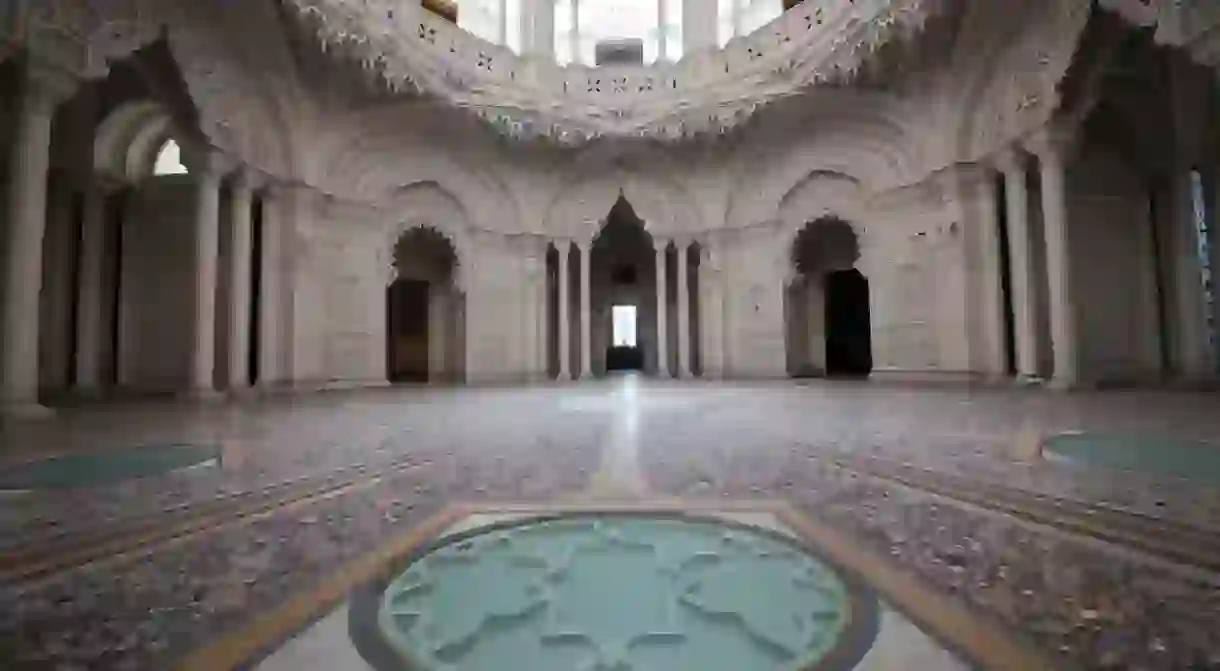The Best Abandoned Buildings to Visit in Italy

From unfinished sports complexes to long-vacated hotels, you won’t find these forgotten sights in the guide books. We present Italy’s most intriguing abandoned buildings.
Whether it be a grand hotel whose guests have long since checked out, a once luxurious family home now hexed by a curse, or a sports stadium that never hosted a single competition, Italy’s abandoned buildings often have a fascinating history. Visit at your own risk however – many are on private land with years of neglect and decay making them precarious places to explore.
Città dello Sport
Stadium

The Città dello Sport lies unfinished in the Tor Vergata district of Rome, its white, steel skeleton rising up out of the landscape. The multi-purpose sports complex was designed by Spanish architect Santiago Calatrava and was commissioned to host the 2009 World Swimming Championships. It would have featured two ‘shark fin’-shaped pavilions housing an Olympic swimming pool, a basketball and volleyball court, athletic tracks and other sports facilities, but the project was dropped due to the 2008 financial crisis and subsequent rising costs.
Villa De Vecchi
Building

Built between 1854 and 1857 in Cortenova, Lombardy, Villa De Vecchi was once a luxurious mansion and home to the De Vecchi family. According to local legend, the family all met unfortunate ends and stories of murder, suicide and even the supernatural abound. The house now stands in ruins, its walls overcome with weeds and its once bright-red façade peeling and faded.
Consonno
Amusement Park

Consonno, in the province of Lecco in northern Italy, was once a small farming village with a population of a few hundred. Today the population is zero and a series of bizarre buildings stain the landscape. In the early ’60s, entrepreneur Mario Bagno set about constructing a Las Vegas-like complex that included a medieval-style castle, Chinese pagodas and a minaret (a tower connected to a mosque). Bagno had plans to extend the site with even more attractions but, in 1976, a landslide destroyed the main road to the village and the site was deserted shortly after.
Grand Hotel Campo dei Fiori
Building

Perched atop a mountain in the province of Varese, northwest Lombardy, is the Grand Hotel Campo dei Fiori. Built in 1912, its 200 rooms hosted well-to-do holidaymakers until the closure of the area’s funicular and the decline of tourism in the late ’50s. In 1968, this lavish Art Nouveau hotel closed its doors for good and the building owners were later forced to install radio antennae, owned by private broadcasters, on the hotel roof as a way of paying for maintenance costs.
Isola della Gaiola
Natural Feature

The picturesque Isola della Gaiola boasts a small private villa with stunning panoramic views of the Gulf of Naples. The trouble, however, is that the island is supposed to be cursed. Thanks to the bad luck suffered by a string of owners – including the head of Fiat Gianni Agnelli and billionaire tycoon John Paul Getty – the villa has long been vacated. The island is now part of a protected marine area and can only be reached by a short swim from the mainland.
Vallone dei Mullini
Archaeological site

The Vallone dei Mullini, or Valley of the Mills, is a deep mountain gorge in Sorrento, formed by a huge volcanic eruption 35,000 years ago. Its name comes from an old grain mill located there, once powered by water coming from the hills. Following the construction of the town’s main square, which isolated the valley and cut off its roads, the area was abandoned in the 19th century. Now, nature has reclaimed the space and lush vegetation bewitchingly envelops the stone building.
Castello di Sammezzano
Building

Sammezzano, or the Castle of Sammezzano, is nestled in woodland just outside Florence. The building was completely overhauled between 1853 and 1889 by Marquis Ferdinando Ximenes, who added eclectic details from floor to ceiling. It’s now a stunning example of Moorish Revival architecture, featuring hidden niches, intricate archways, colourful vaulted ceilings and decorative columns. There are plans to restore the all-but-abandoned castle but, for now, it only opens its doors two or three times a year. The waiting list for visits can be found here.
Colonia di Rovegno
Building

Built in 1934 as a summer camp for children in Italy’s Liguria region, the Colony of Rovegno is a long-abandoned concrete complex with a dark past. Construction was funded by the National Fascist Party but, as World War II took hold, antifascists occupied the building and turned it into a prison camp for soldiers and civilians suspected of being collaborators. As hostilities continued, prisoners were executed, their bodies thrown in mass graves or pits in the woods around the colony. Today, the decaying site is a poignant reminder of this period of the country’s history.













